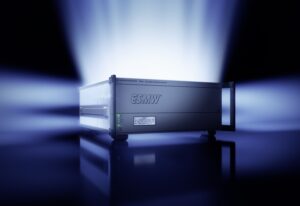Rohde & Schwarz Launches New Solution to Meet Future Spectrum Monitoring Trends

The R&S®ESMW ultra wideband monitoring receiver is ideal for meeting future spectrum monitoring trends and challenges. (Photo courtesy of Rohde & Schwarz)
The R&S®ESMW ultra wideband monitoring receiver features cutting-edge, future-proof performance specifications for next generation fixed and mobile spectrum monitoring.
Rohde & Schwarz is proud to announce the launch of the R&S®ESMW ultra wideband monitoring receiver. It is a high-performance solution for next generation spectrum monitoring that covers the wide frequency range of 8 kHz to 40 GHz with outstanding real-time bandwidth of up to two Gigahertz. The target-oriented ITU-compliant RF performance, modular upgradeability and rich feature set make R&S®ESMW a highly reliable and innovative solution to measure current and future wideband signals in high-density spectrum environments.
New and more complex transmission standards are inevitable as demand grows for wireless network connectivity. The standards aim to optimize spectral efficiency and explore higher frequency ranges by making more bandwidth available. As the spectrum becomes more crowded, channel bandwidths of 320 MHz (Wi-Fi 7), 400 MHz (5G FR2) and beyond (6G) will become commonplace. This trend makes it difficult for regulators to verify proper spectrum usage in wideband and highly dynamic spectrum environments. R&S®ESMW addresses these requirements optimally by offering a flexible modular option structure with multiple hardware and software extensions.
“Besides standalone operation, R&S®ESMW can be easily upgraded for existing high-performance spectrum monitoring systems with our R&S®ARGUS software thanks to its backward compatibility with R&S®ESMW and R&S®ESME wideband monitoring receivers,” says Anne Stephan, Vice President Critical Infrastructure & Network, Rohde & Schwarz.
The R&S®ESMW ultra wideband monitoring receiver solution significantly differs from existing market solutions and combines state-of-the-art technology with an intuitive operational concept for regulators, security authorities, critical infrastructure operators, intelligence agencies and armed forces.